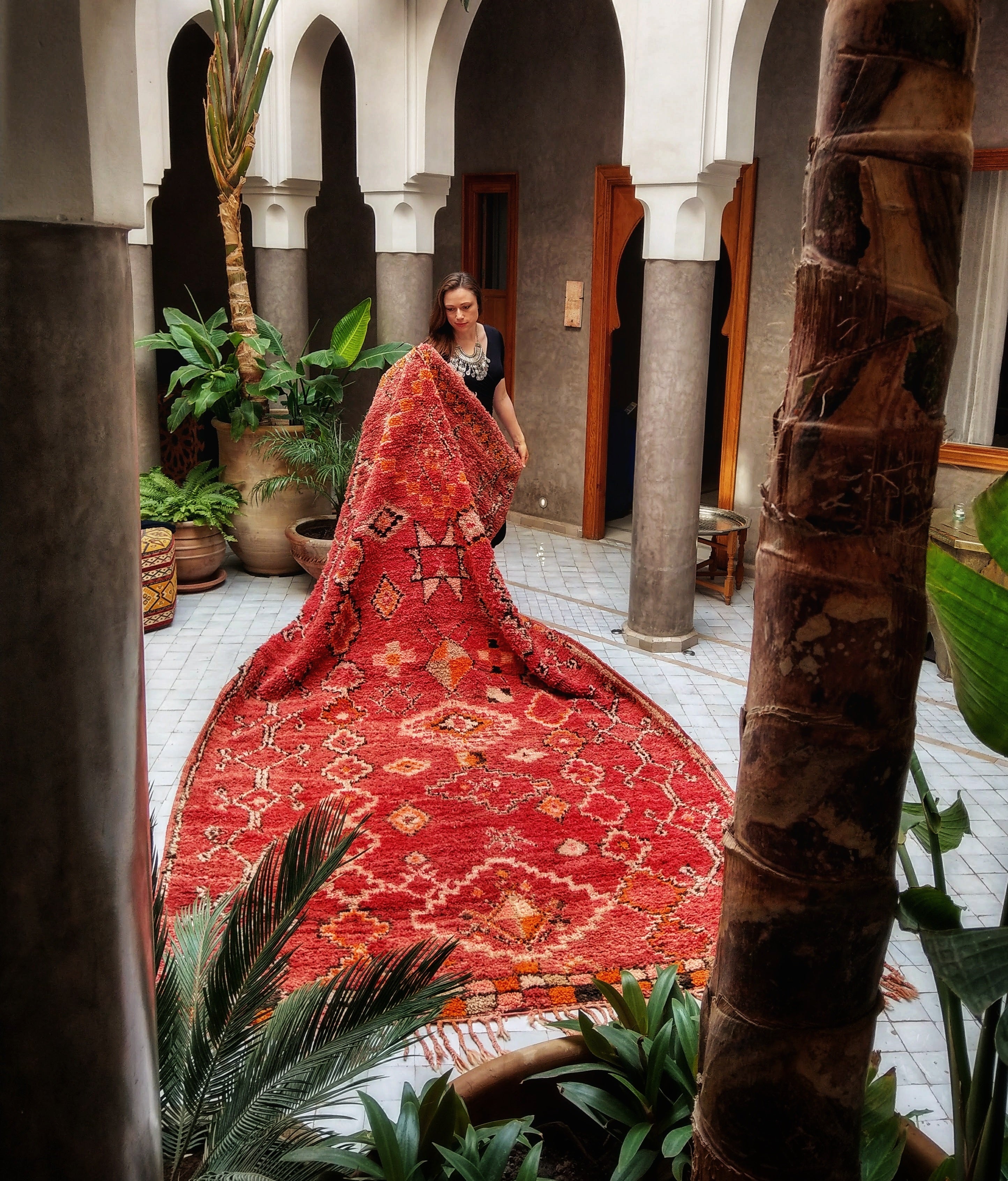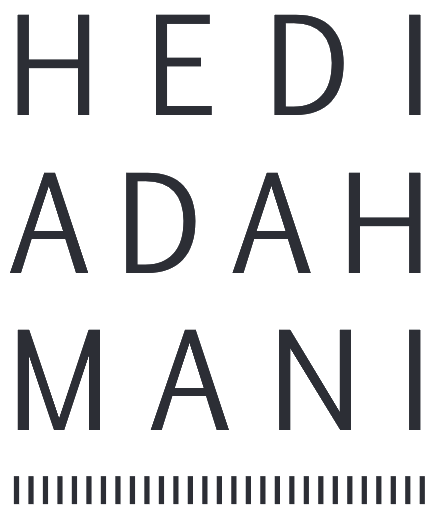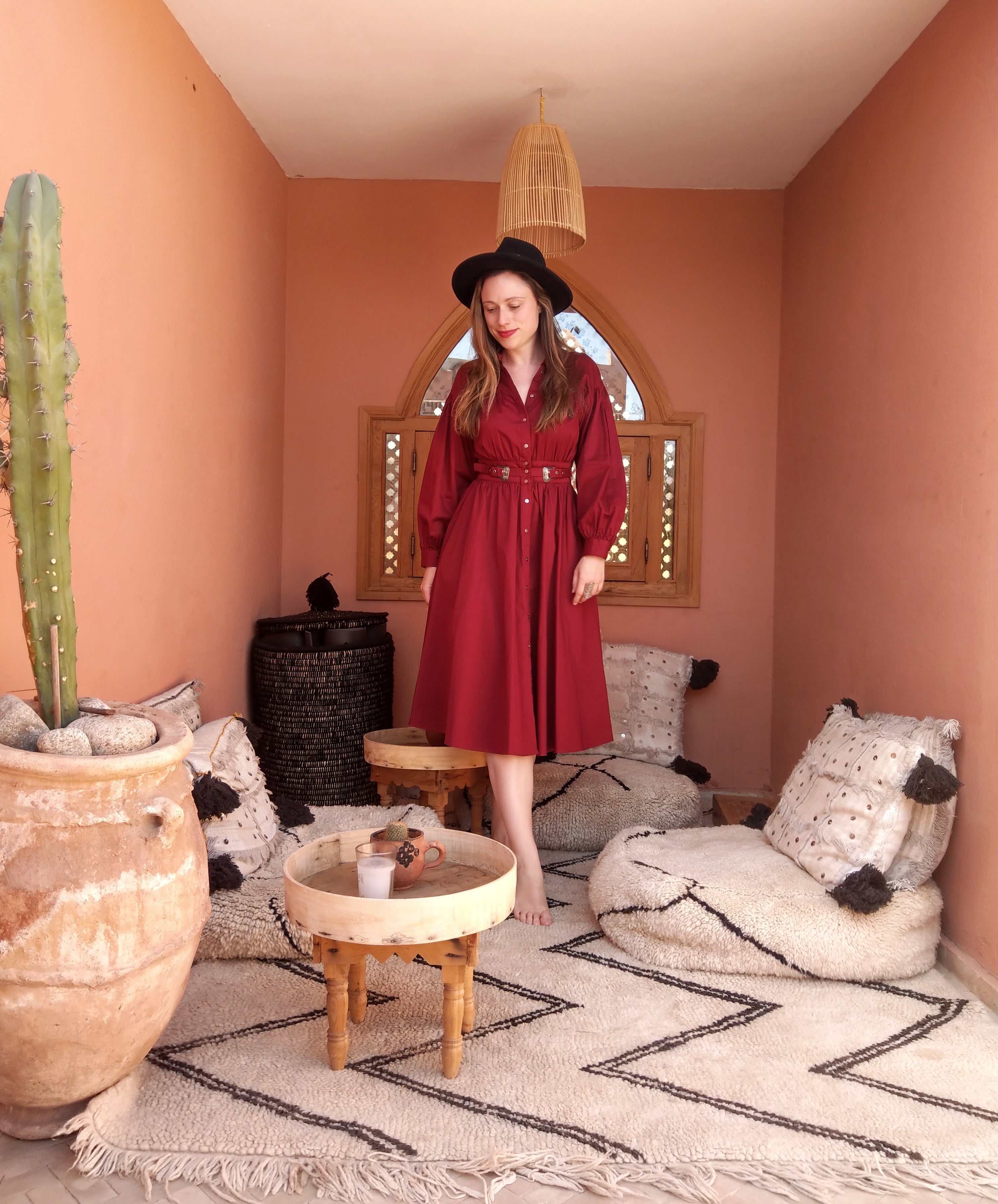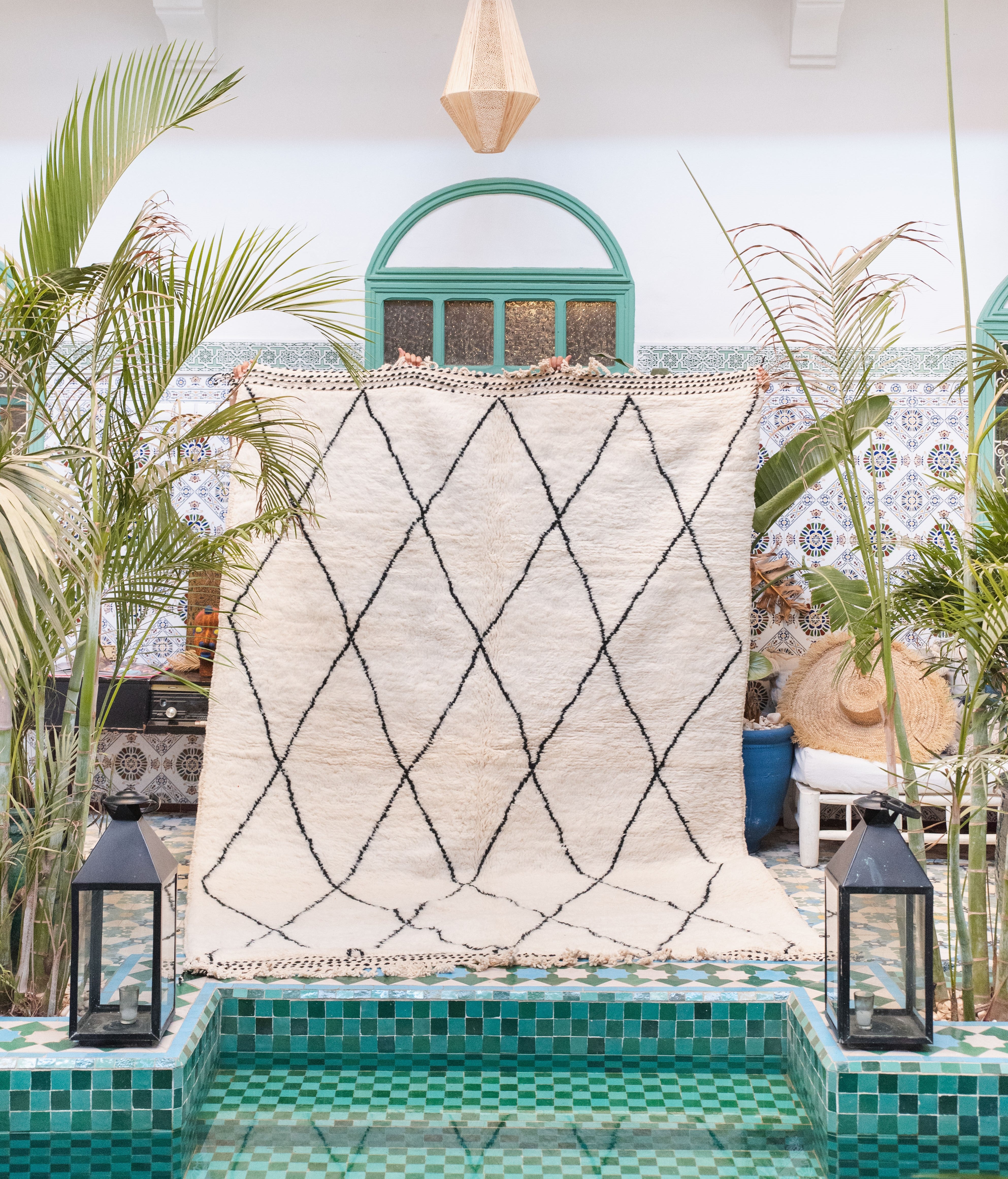
Mysteries and Hidden Clues – the Symbolism of Moroccan Berber Rugs
A Moroccan Berber Rug might be one of the trendiest and even timeless interior design elements. Somehow it manages to perfectly fit into almost any concept, bringing the authentic spirit and energy of an ancient culture embodied in those unique items.
Berber culture is a truly unique phenomenon. It manages to preserve, cherish and thrive, being practically isolated from the rest of the world for many centuries. It allowed Berber craftspeople to create and develop their own artistic language - a system of symbols.
This symbolism may remain a mystery to a mere spectator. But it reveals a whole universe of genuine self-expression, myths, legends, and traditions of a truly authentic culture once you try and look beyond those symbols and clues that they reveal.
The stories told through the ornaments of Beni Ourain or any other famous style of a Berber carpet might seem pretty plain at first sight as they are concentrated on a simple tribal life and its primary values. But once you try to analyze them, you understand the simplicity of genius behind each pattern—the eloquence of minimalistic expression that focuses on genuinely mindful and sustainable living.
In this article, we want to discuss the symbolism of traditional Moroccan Berber Rugs` patterns, their historical and cultural background, and how they correlate with the current interior design trends and modern lifestyle.
What do we know about Berber Rugs and their image?
The bad news is we might never reveal the true meaning of most Moroccan Rugs` symbols. It is because, just like it happens in any ancient culture, those symbols and their importance have been transformed and reinterpreted while being transferred through generations.
However, while some of those transformations were genuinely personal and depended on the craftspeople that created a particular rug, most of those symbols are deeply correlated with the Berber culture, its history, and heritage, which can be followed and studied today.
You may compare this process to the transformation of symbolism in tattoos. Some had a particular meaning in certain subcultures and then turned into purely decorative over time, while others vice versa may still serve as hallmarks for specific groups.
Technically the concepts of symbolism behind the most distinctive Moroccan rugs like a minimalistic Beni Ourain and a colorful Azilal are similar to those of graphic arts from all over the world.
Some of them serve as a reminder of divine presence, while others are meant to protect from the evil eye. More "practical" symbols like those depict the environment, nature, animal, and plant species that surrounded and amused ancient Berbers.
Let's go over the fundamental symbols of Moroccan Berber Rugs` patterns, their meanings, roots, and more interpretations.
The Berber Cross

Also known as "Scissors," this type of pattern is a hallmark of the world-famous Beni Ourain carpets. Now appreciated for their versatile minimalistic design, those rugs were believed to be a powerful talisman mostly meant for blacksmiths, jewelers, and other people who worked with metal and fire.
While some experts claim that Berber Cross is a crude representation of a person standing up with their hands towards the sky as a reminder of divine presence and supremacy, others believe in this symbol's more "practical" meaning.
The Berber Cross is considered a powerful talisman that would drive off evil spirits and demons that live in metals and fire, tempting people to be enslaved by wealth and power.
The Scarab or the Berber Diamond

This symbol is also referred to as an eye sometimes, and, just like in numerous other cultures, it represents protection from an evil eye.
However, Berber Diamond is a pretty specific ornament, which represents the spirit of the people in many ways. It is often surrounded with errors and zigzags on edge meant not only to drive off the negative energy but also reflect it back in four directions so it would get lost in the Universe and never get back.
This symbol is often seen on Azilal Moroccan rugs, where it is also empowered with the energy of bright colors.
The Frog

One of the most colorful and distinctive patterns of Moroccan Rugs, a Frog, is a combination of diamonds and square geometric figures that shape a crude image of a frog.
This animal was a symbol of pureness and fertility for the ancient Moroccans as they have noticed that it can only live and reproduce in clean water. Such carpets were a part of the traditional dowry and a gift for a wedding or childbirth.
The Bird or the Butterfly

A cross made out of four rectangles of a contracting color embodies Berbers` belief that airborne creatures are the ones closest to the divine.
They represent freedom and feminine beauty and are meant to protect from misfortune and the heavy burden of an unhappy marriage or a broken home.
Snake and Fish or a Twig

Those traditional symbols are sometimes referred to as Snake or Fish and therefore believed to represent magical powers given to those fascinating animals and transferred to people who are ready to comprehend them.
In other interpretation, this vertical line that intersects a column of chevrons or a sequence of triangles and diamonds represents trees or plants. In this case, they embody the power of nature and the medicinal qualities of herbs.
One way or another, carpets with such patterns are believed to secure the owner's help and bring relief to those suffering from diseases.
The Teapot

Often represented as a figure made out of diamonds or a schematic outline of the traditional Moroccan teapot, this symbol embodies the friendliness and hospitality of the house.
Barley

Sometimes called "a Berber Yin Yang," Barley is technically a chequered pattern of contrast colors. Just like the famous Chinese symbol, it represents the concept of dualism and the perfect balance between opposites.
Sometimes it is also referred to as a symbol of fertility and happy marriage.
The colors also matter.
Not only do the patterns themselves carry deep symbolic meaning in Moroccan Carpets. The colors may either complete or change the purpose of a traditional symbol entirely.
Here are the primary colors and their meaning:
- Red - power and protection
- Yellow – eternity
- Blue – wisdom
- Green – peace
That way, a traditional Snake and Fish pattern may mean peacefulness unity with nature once made with green colors and vice versa juggernaut against the enemy and evil spirit if it has red elements.
Conclusion
As you might have noticed, the symbolism of traditional Moroccan patterns makes those carpets something much more significant than trendy interior design elements.
They can reinforce your house's energy, empower and inspire, attracting the ancient wisdom and energy of an authentic, carefully preserved culture and craftsmanship.



Hinterlasse einen Kommentar
Diese Website ist durch hCaptcha geschützt und es gelten die allgemeinen Geschäftsbedingungen und Datenschutzbestimmungen von hCaptcha.